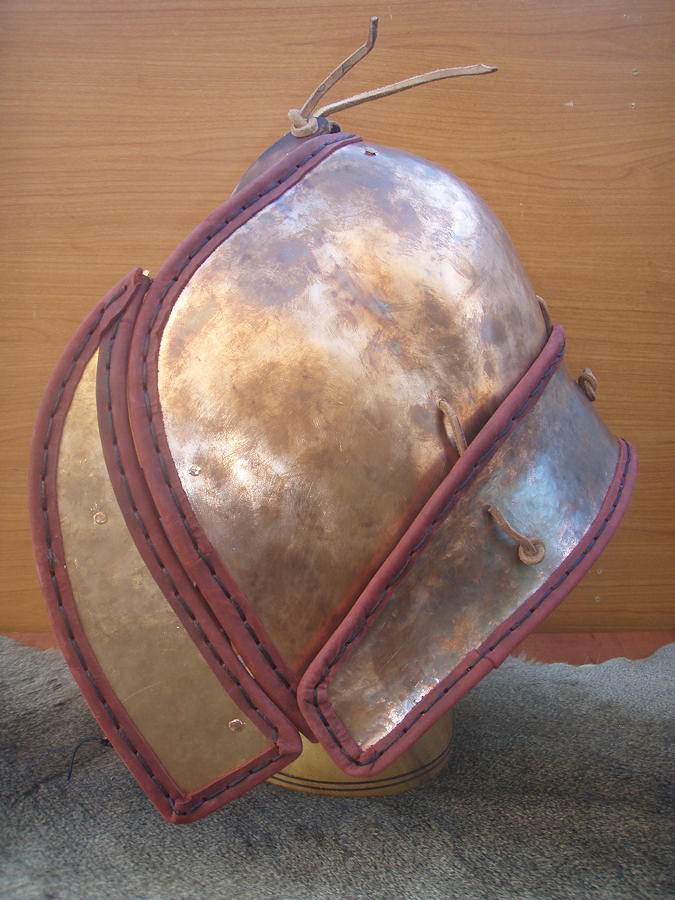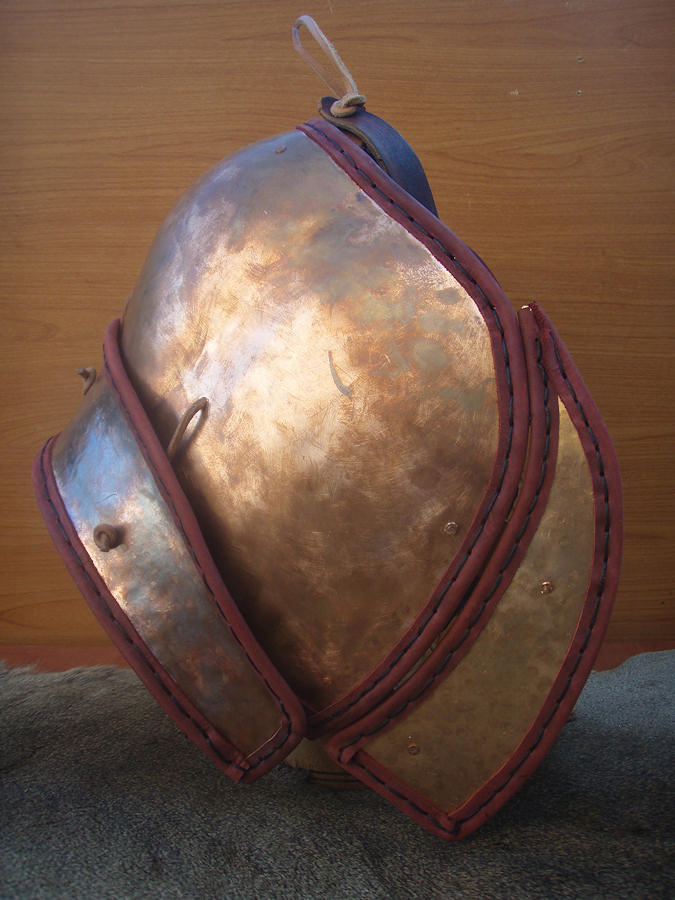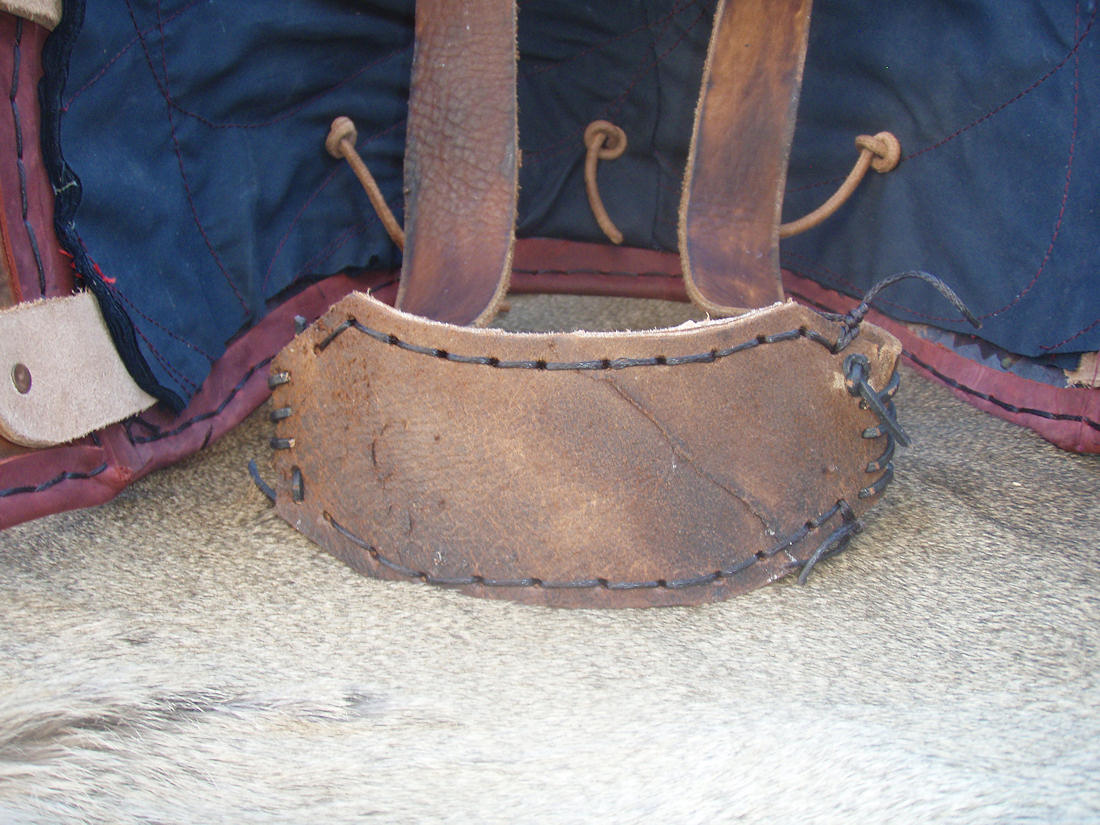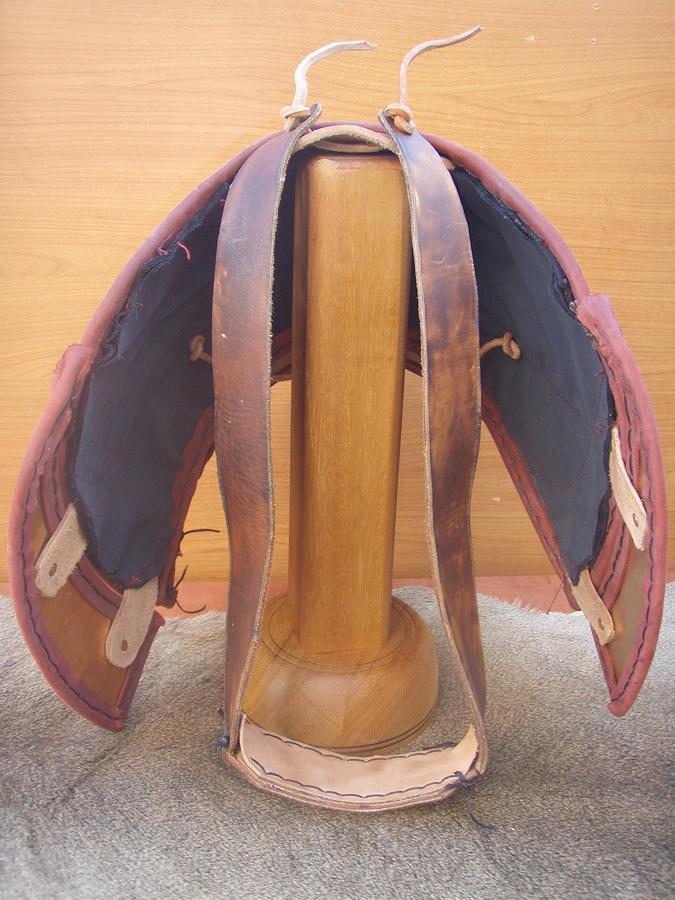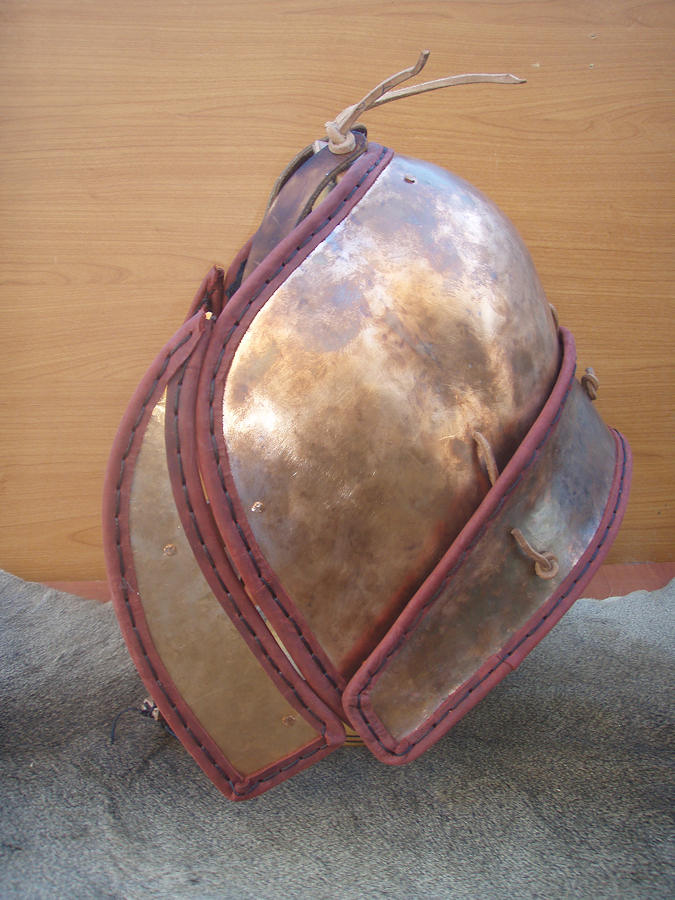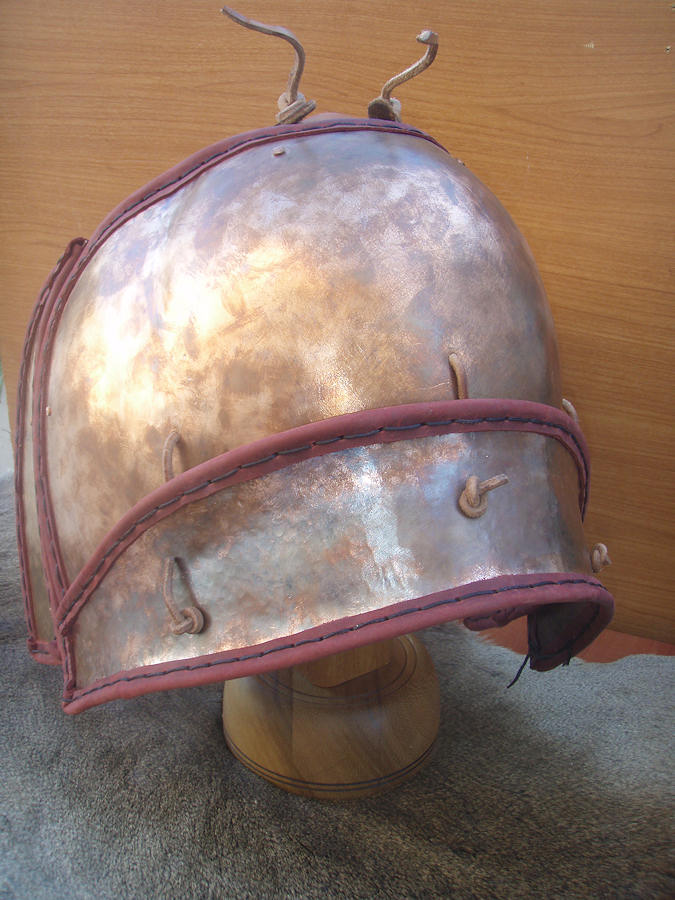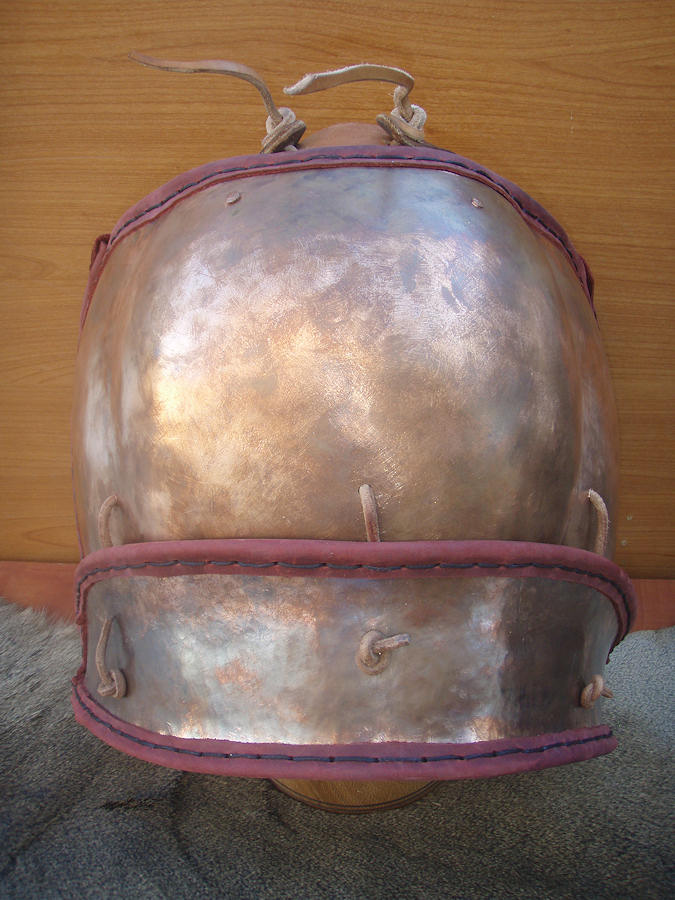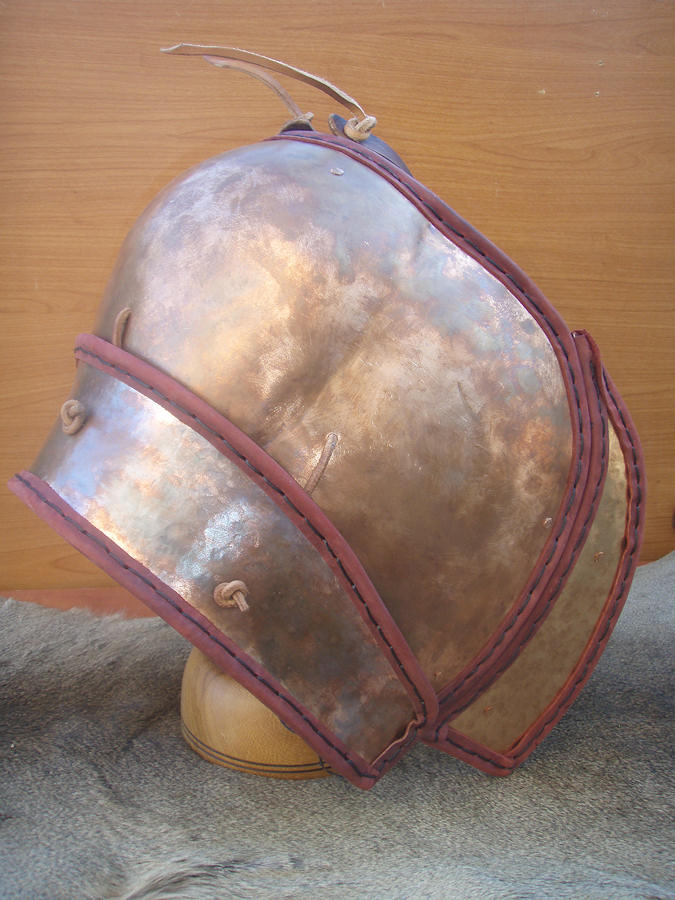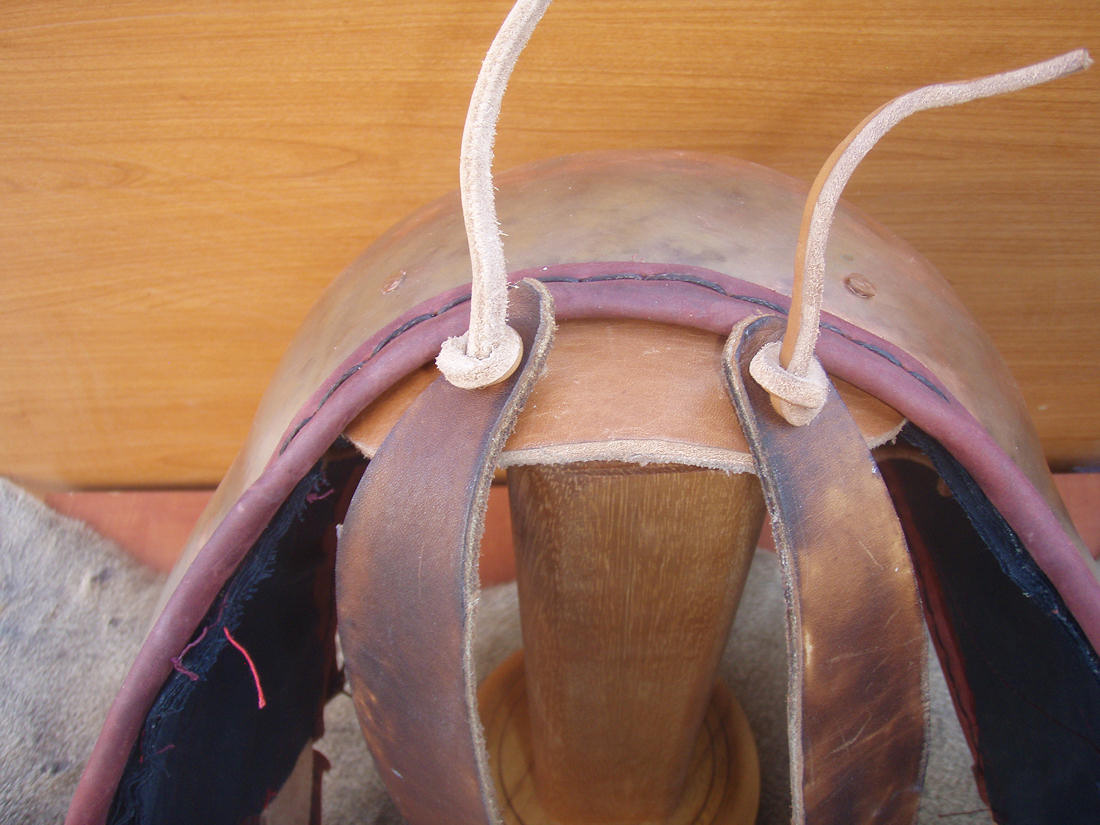Mycenaean Armor
Mycenean “Gladiator” Pauldron
15th - 14th century B.C.
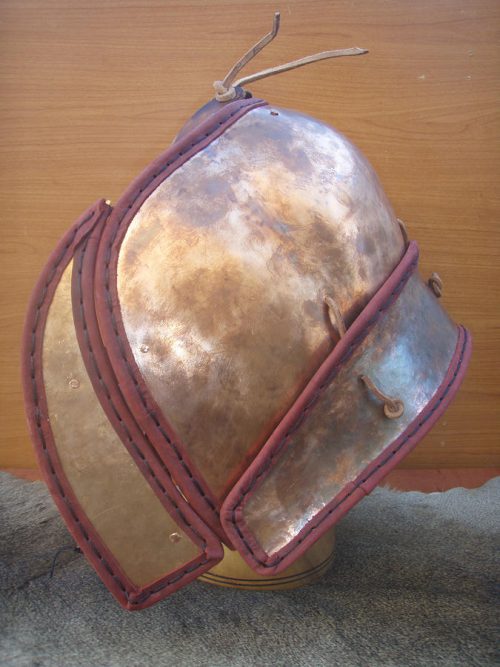
The artistic (e.g depictions from rings and seals) and archaeological evidence from the Mycenean period (15th – 14th BC) reveal the use of individual oversized pauldrons, worn as main defensive devices by the hoplites. Their characteristic shape and size more or less offers a basic protection for the upper part of the torso without a need for regular torso armors.
The “Gladiator” pauldron have been made by copper and is being consisted by four parts: the main shoulder part (curved), the two side crescent-like parts and the horizontal narrow section at the low rim of the main part. The whole construction have been based to “Dendra Armor” analog pauldron. To inner sides have been applied soft textile padding , all the rims have been covered with folded leather stitched directly to the metal. The three minor parts are been connected with the main pauldron by leather straps and leather thongs enabling a relatively freedom of moves.
A leather belt, attached to the upper part of the main pauldron, surrounds the torso , passing underneath the left or right armpit (it depends from the very occasion) and holds in place the whole gear. A high effective and practical defensive construction.
